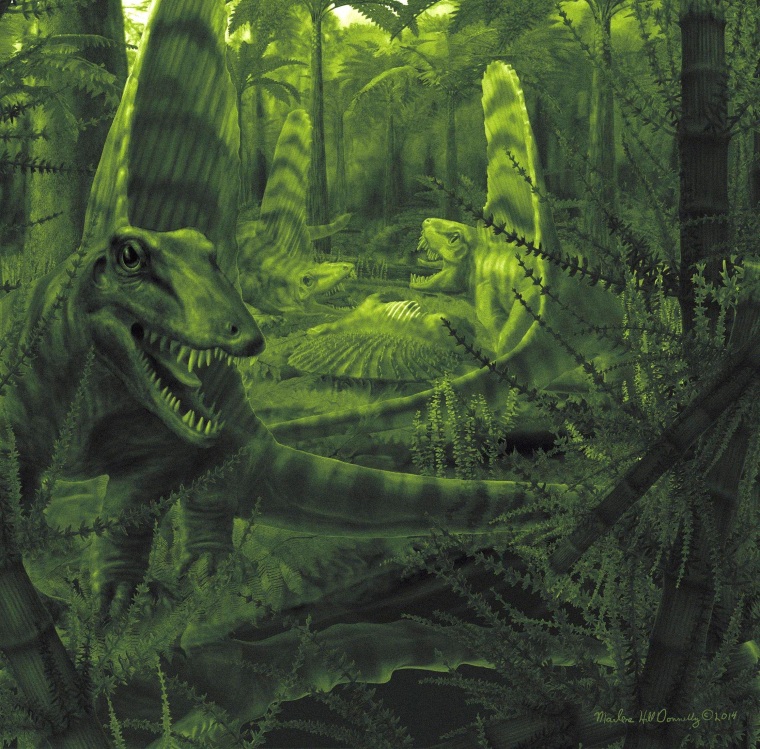A nocturnal existence is a way of life for numerous mammals, from bats that swoop through dark skies, to skunks that emit their noxious spray under moonlight, to the majestic lions, tigers and leopards that prowl the night.
But this love of nightlife appears to have begun much earlier than previously believed. in the lineage that led to mammals — perhaps 300 million years ago — way before the first true mammals skittered under the feet of the dinosaurs about 100 million years later.
Scientists on Wednesday said a study of fossils of small ring-shaped bones, embedded in the eyes of an important group of ancient mammal relatives called synapsids, indicated that many of them thrived at night or in the twilight. The findings appear in the Proceedings of the Royal Society B.
The mammal relatives arose around 320 million years ago and became the dominant land creatures during the Permian Period that preceded the rise of the dinosaurs.
"The study does give us new insights into the daily lives of some of our most ancient relatives," said Kenneth Angielczyk, a paleontologist with the Field Museum of Natural History in Chicago.

The findings indicate nocturnal activity has a deep history in the lineage leading to mammals. This contradicts the conventional wisdom that nocturnal lifestyles emerged with the appearance of the first bona fide mammals about 200 million years ago, because they needed to slink around in the dark to avoid becoming dinosaur chow.
The researchers focused on bones called scleral ossicles that reveal the eye's dimensions and enable predictions about light sensitivity, indicating whether an animal was nocturnal or active during daytime or active in twilight conditions. Modern mammals lack these bones.
The researchers scoured museum collections around the world and found 38 specimens comprising 24 species, mostly from the United States and South Africa but also from Russia and Brazil. They determined that the eyes of ancient synapsids probably spanned a range of light sensitivities, some suited to nighttime and others favoring daylight. The oldest synapsids possessed eye dimensions consistent with night activity.
